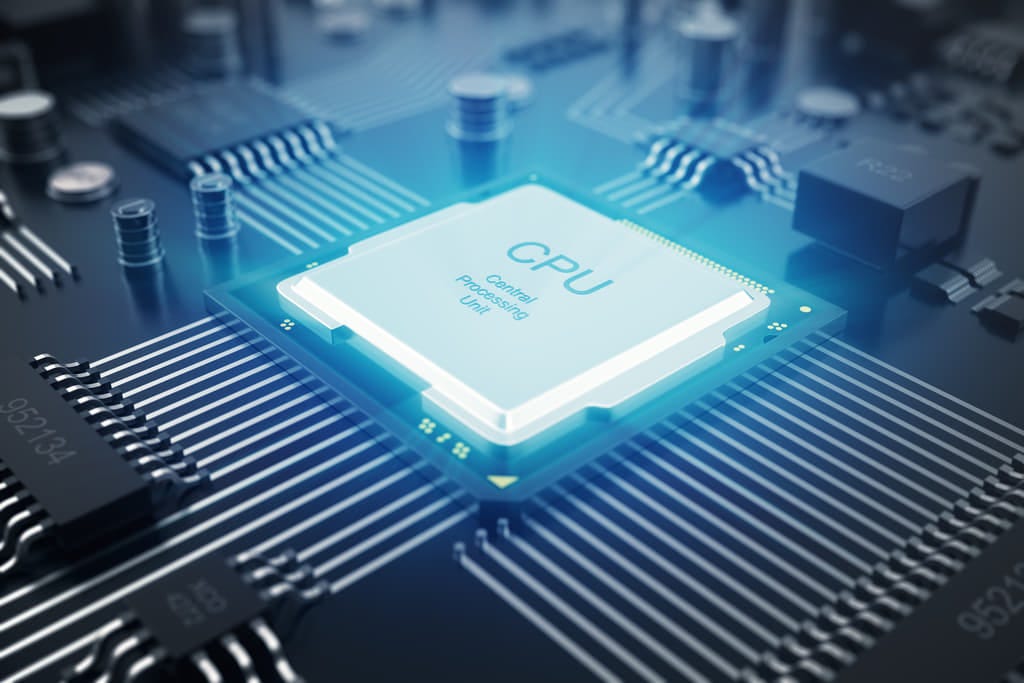The Battle Between Intel and AMD for Market Dominance

Credit: Intel.com
Intel and Advanced Micro Devices (AMD) have been competitors in the computer processor market for decades, with both companies continually vying for market dominance. Intel has long been the dominant player in the market, holding a significant market share and serving as the preferred choice for many of the world’s top computer manufacturers. However, in recent years, AMD has made significant strides in closing the gap and has emerged as a major challenger to Intel’s dominance.
One of the key factors in AMD’s rise has been the company’s focus on innovation and the development of advanced processing technologies. AMD has introduced a number of highly competitive products, including its Ryzen line of processors (desktop, workstation, mobile), which have received positive reviews from both consumers and industry experts. The Ryzen processors are similarly aimed at the consumer and enthusiast market, and they offer a range of performance options for different needs, from basic computing tasks to demanding gaming and content creation. The Ryzen processors offer high core counts, advanced features, and strong performance, and they are a popular alternative to Intel’s Core processors. These processors have been well-received for their strong performance, energy efficiency, and affordability, which has helped to attract a growing number of consumers and businesses to the AMD brand.
In response, Intel has continued to invest in its own technology and product development, focusing on maintaining its market leadership. The company has introduced several new processors, including its Intel Core (like some recent architectures Comet Lake and Alder Lake lines). The Intel Core processors are designed for the consumer and enthusiast market, and they offer a range of performance options for different needs, from basic computing tasks to demanding gaming and content creation. Despite these efforts, Intel has faced several challenges in recent years, including production issues, supply chain disruptions, and increased competition from AMD.
In the high-end server market, both Intel and AMD offer high-performing server processors. Still, the specific performance will depend on the specific processor model and the workload being run. Intel’s server processor product line includes the Xeon line of processors known for their high performance and reliability. Intel’s Xeon processors are widely used in data centers and enterprise environments, and they offer advanced features such as support for large amounts of memory, error correction, and virtualization technologies. The latest Intel server processors are the Intel Xeon Scalable processors, also known as the Intel Xeon Platinum, Gold, Silver, and Bronze processors. These processors are based on the company’s 10nm and 14nm manufacturing processes and offer a range of performance options for different workloads, from basic web hosting to high-performance computing.
AMD’s server processor product line includes the EPYC line of processors designed to compete with Intel’s Xeon processors. AMD’s EPYC processors offer many cores and threads, making them well-suited for demanding workloads like database processing and virtualization. EPYC processors offer a more cost-effective solution than Intel’s Xeon processors without sacrificing performance. The latest AMD server processors are the AMD EPYC Milan processors, which are based on the company’s 7nm manufacturing process and are the latest iteration of AMD’s EPYC server processor line. The EPYC Milan processors offer a range of core counts, high memory bandwidth and capacity, and advanced security features, making them well-suited for demanding enterprise workloads.
It’s worth noting that AMD has made significant gains recently and closed the performance and power efficiency gap with Intel. The following graph shows the overall CPU market share between Intel and AMD. Go to the website for a more detailed market share of different CPUs like servers, desktops, etc.

The choice between Intel and AMD processors ultimately depends on individual needs and preferences. Here are some factors that may influence the decision between choosing Intel versus AMD, or vice versa:
Why Intel:
- Performance: Intel has traditionally been known for delivering top-notch performance in single-threaded applications, such as productivity software and everyday tasks.
- Power Efficiency: Intel processors are often more power-efficient, making them a good choice for laptops and other mobile devices where battery life is a concern.
- Software Support: Intel has a long history in the computer industry and has strong relationships with software vendors. As a result, many software programs are optimized for Intel processors, and users may experience better performance and compatibility when using Intel processors.
Why AMD:
- Multithreaded Performance: AMD processors have historically been stronger in multithreaded applications, such as content creation, video editing, and gaming.
- Price: AMD processors are often more affordable than comparable Intel processors, making them a more cost-effective choice for budget-conscious consumers.
- Innovation: AMD has been pushing the boundaries of processor technology in recent years, and its Ryzen line of processors has received positive reviews for its strong performance and energy efficiency.
Despite the ongoing battle between these two companies, both Intel and AMD are expected to play a significant role in the computer processor market for years. The industry is expected to grow, with increasing demand for high-performance computing solutions for various applications, including gaming, data centers, and artificial intelligence.
It is from https://jamescomputer.substack.com/p/the-battle-between-intel-and-amd

